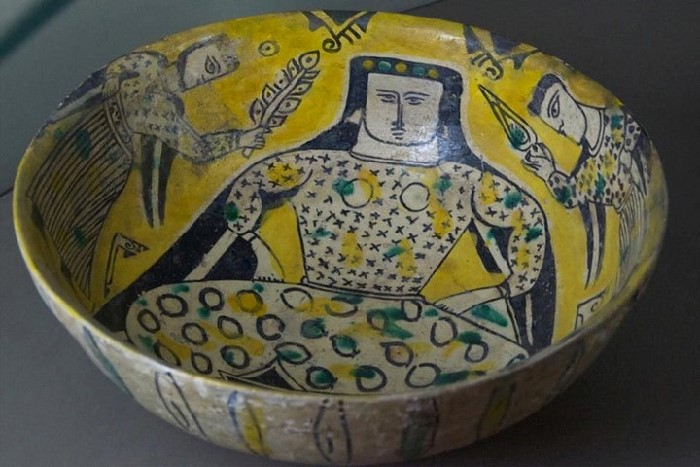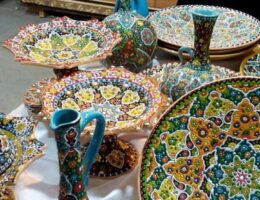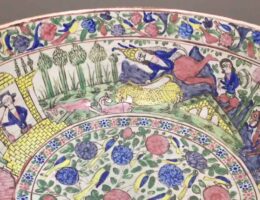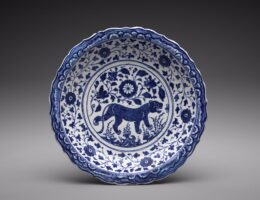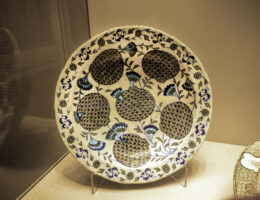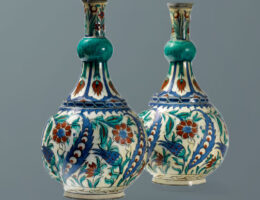IRAN ART EXHIBITION: POTTERY OR “SOFALGARI” IS ART OF CLAY AND FIRE
Pottery or ‘Sofālgarī’ is one the most acclaimed and renowned, traditional handicrafts of Iran which that refer to the art of making different kinds of pottery and crockery of baked clay such as bowls and jars.
Iranian Pottery
without glaze is called “biscuit pottery (Sofāl)”. Iranian ‘Sofāl’ or earthenware is made of ‘secondary soils’ ( secondary soils are those not fixed in one place but moving all the time. therefore, have less purity and stickiness and are baked in the heat of 950 to 1000 degrees centigrade. The most important secondary soil is clay, whose natural color varies from buff to red. The English term ceramic contains the exact meaning of ‘Sofāl’ in Persian which is produced in most provinces of Iran such as Hamadān, Tehrān, Qom, Esfehān, Yazd, Gīlān, Māzandarān etc.
One of the main centers of pottery in Iran is, however, Kolpurgān in Sīstān Va Balūchestān Province that is well-known for its distinctive making-technique that is briefly dealt with here; In Kolpūrgān the crockery is made by string
method rather than the traditional pottery-machine. In string method the clay is kneaded and shaped into thin strings. Then the clay strings are put together to reach the desired size. Subsequently the potters make a lot of vertical or diagonal lines to fade the lines of the string clays and make the surface appear smooth. After that they draw the desired shapes and designs on crockery, and finally put them into kilns. Kolpūrgān’s earthenware are not enameled which resembles the earthenware of primitive men.
History of Pottery in Iran
IRAN ART EXHIBITION: Since Iran was located in the middle of the other ancient civilizations, and people had interactions with other societies, the art of pottery was flourished in every corner of this vast land, including the Marlik Civilization, located in the north of Iran (728-330 B.C), the Sialk Civilization located near Kashan (around 400 B.C), the Susa Civilization in the southeast of Iran (3800-3100 B.C), the civilization of the “Burnt City”, located in Sistan and Baluchistan, and many other places. The potteries of these ancient civilizations are mostly decorated with abstractive motifs of animals like goats and storks and symbolic geometric forms representing the sun, the farming lands, etc. The potteries made during the Achaemenid period were statuettes of bulls, which shows the importance of this animal in ancient Iranian culture and legends and during the Sassanid Empire, the pottery pieces were glazed with green and blue.
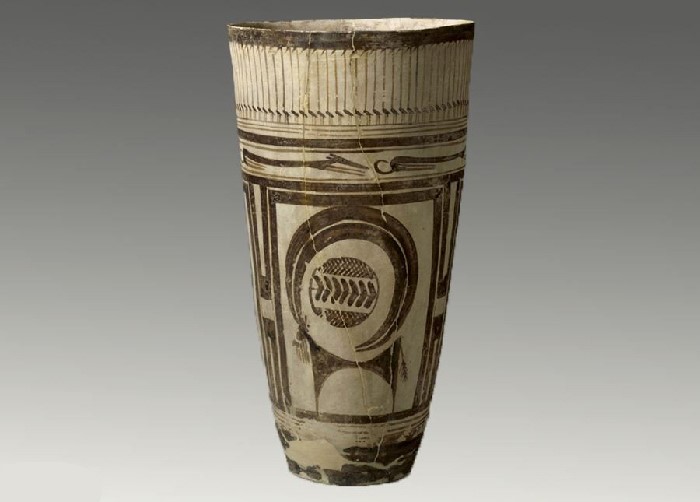
Pottery in Iran
Inspired by Islamic art and philosophy, the Iranian pottery started to flourish again during the Islamic era. The potters revived their pottery traditions during the Samanid Period and this art was improved with the influence of Islamic and Chinese art during later dynasties, like the Seljuk, Ilkhanid, Timurid. Just like other arts and crafts, Iranian pottery was at its best during the Safavid Dynasty, when artistic vessels were made and professional glazes were applied and they were decorated with the most delicate patterns.
IRAN ART EXHIBITION: Today pottery wares are still widely produced in some cities of Iran like Lalejin located near Hamadan, where potters make delicate potteries with colorful glazes, Meybod, a historical city in Yazd province where pottery wares are decorated with very charming motifs of fish, birds, and faces named “Khorshid Khanom”. Kalpoorgan is an unknown city in Sistan and Baluchistan Province, where local women make vessels without using a pottery wheel and simply design the reddish clay with lines and dots.
There are still many active pottery workshops in the cities mentioned. Visiting these workshops and trying to make a piece of pottery the way Iranian potters did during millenniums is going to be a wonderful experience when you visit Iran.
